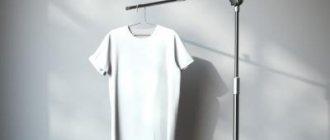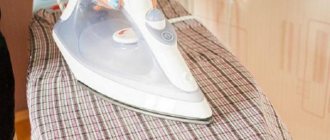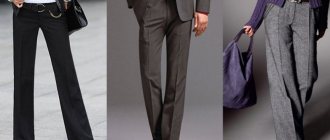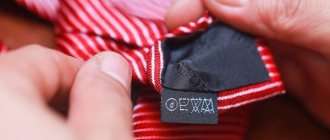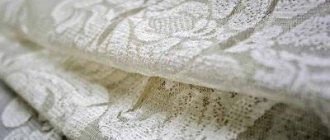Women always want to remain delightful, and a celebration is an opportunity to demonstrate their attractiveness to others. And here every little thing is important: hairstyle, shoes, accessories, clothes.
But sometimes it happens that a girl purchased a dress in advance, and before the event she noticed that the folds, ruffles or bows were wrinkled. Typically, a steamer is used to remove wrinkles.
But what to do if there is no such device on the farm? There are several options for steaming a dress at home without a steamer.
Ironing methods
- Dry . In this way, iron things from the wrong side or the right side.
- With moisturizing . The product is sprayed with water or wrapped in a damp towel, and then ironed with a hot iron.
- With steaming . In this case, the iron uses the steam function. Under no circumstances should you iron items that shrink, such as viscose.
If you are unsure which ironing method is appropriate for a garment, try ironing a small area on the reverse side.
How to prepare for ironing
To begin, turn on the iron to the desired setting.
Each fabric has its own ironing requirements. For example, to iron wool you need to stop at 100-120 degrees Celsius, and cotton can be ironed at a temperature of 140-170 degrees.
The following materials must be ironed at these temperatures:
- Cotton with polyester - 140-170 degrees.
- Silk - 80 degrees.
- Linen - 180-200 degrees.
- Viscose - 120 degrees.
- Chintz - 170 degrees.
All indicators are maximum temperature values. Deviations of 10-20 degrees lower are considered normal.
Next, you should fill the tank with water. Not available on all models, but if you have the option, please do so. Water is necessary for better steaming of things; after ironing they will look even better.
If you have a new iron, never direct the steam directly at your laundry, as the steam chamber may become dirty. We first recommend pouring water into the compartment, then releasing a stream of steam and starting ironing. Users usually have no problem opening the water tank.
Only pour liquid when the device is unplugged. Don't neglect safety rules.
Experts advise emptying the iron immediately after ironing the fabric and leaving it in an upright position.
Set the handle to the “no steam” position if you are not using the device. This is due to the fact that if this mode is not set, the remaining water begins to flow into the soleplate of the iron. This can lead to breakdowns.
Ironing with vertical steam
Irons currently produced have a vertical steam function. It helps smooth out even the thinnest parts of the fabric that do not tolerate exposure to the hot sole of the device.
It is used for tidying outerwear, smoothing curtains, as well as for thermal disinfection of fabric, toys, delicate furniture, etc. The scope of vertical steaming is almost unlimited.
Using a vertical steam iron is very simple:
- Fill the tank with cold water and plug in the device. The device has a special regulator that shows the steam supply modes. Choose the option you need.
- The liquid begins to heat up quickly (several minutes), after which it evaporates. Steam comes out of small holes on the sole. Pressing the button is accompanied by a steam jet.
- To smooth things vertically, hang them on hangers or any similar hanger. Pull the fabric taut with one hand and try to move the iron from top to bottom with the other hand. It is not necessary to smooth things on both sides, since the steam penetrates quite deeply.
This method is ideal for steaming curtains and delicate fabrics that cannot be ironed using any other method.
Some models have different steaming modes. They are divided by steam power, since it all depends on the type of fabric. For example, the power when ironing silk should be less than if it were cotton or wool.
Basically, only one option is used, but if you constantly interact with fabrics, it is better to purchase an iron with several modes.
Ironing with continuous steam
For large volumes of fabric, ironing with continuous steaming is useful. Not all irons can provide this option, as it depends on the dimensions of the tank.
Continuous steaming helps smooth out even the smallest wrinkles. The method is also suitable for items sewn using delicate materials that cannot tolerate the touch of a hot sole. The ironing method is used when processing curtains, curtains, and furniture covers.
In addition to the above, you can use a special steamer.
There are household and stationary models, divided into manual and floor-mounted. For work in an industrial area, stationary devices should be used, while for everyday purposes, household devices are suitable. You can take a hand-held steamer on a trip (in this case, it is better to purchase a model with a long cord).
Steam ironing
This ability is present in almost all models of modern irons.
If you can’t smooth out a small crease, and even high power doesn’t help, you can use a steam boost. It can be activated by pressing a special button, often located in the middle. After pressing, a high-pressure stream of steam emerges from the sole. Ultimately, the fold is leveled out.
Pay attention to the steam supply speed, as it significantly affects the result. The most effective speed remains 90-120 g/min.
Compared to the constant steam method, the blow is not constant. To create and accumulate new steam, 20 seconds of “recharging” are required. However, if you own a large model with a steam generator, you don’t have to worry about this: your iron constantly supplies large quantities of steam. This is useful for bulky clothes with a lot of folds, as well as for those materials that cannot be ironed out in other ways.
How to iron different types of fabrics
Different fabrics require different temperatures, moisture levels, and ironing methods, so be sure to read the label.
- Synthetic fabrics can only be treated with a warm iron using damp gauze for certain areas of the product. It is best to iron synthetics through the lining fabric.
- Silk must be moistened before ironing by first wrapping the product in a wet cloth for half an hour. Under no circumstances should you spray a silk item: subsequently, water droplets may appear as ugly stains. Iron dark silk through a thin fabric from the wrong side, but it is better to iron light-colored items from the front.
- Lining fabrics (satin, twill, silk) must be ironed from the wrong side without wetting, so as not to lose shine and not leave water stains.
- Jersey is best ironed through damp gauze or linen using a warm iron. Remember that this material stretches well. Therefore, try not to deform the item with sudden movements of the iron.
- Raw silk is used in making curtains and decorative items. This material is ironed while wet from the inside out with a very hot iron.
- Artificial silk . After washing, it is best to wrap it in a material that absorbs moisture well. Iron from the inside out with a moderately heated iron.
- Terry products should not be ironed to maintain their softness and ability to absorb moisture well.
- Wool shrinks quickly, so products made from it are ironed only through a damp cloth on the reverse side at a temperature of 150–165 °C, carefully applying the iron. If woolen items shrink during washing, they are moistened by spraying with water, allowed to rest and ironed through a rag, stretching them to the desired size.
syn-clean.ru
- Nylon is not ironed. To make wrinkles disappear, after washing, moisten the item with a stream of water from the shower and carefully place it on the dryer.
- Velvet and plush can only be ironed from the inside out. Wrinkled and dented areas can be restored to their original form by holding the material, pile side down, over hot steam.
- Viscose fabrics can only be ironed when dry.
- Fuzzy materials . Fabrics with long pile, camel hair, velor, soft types of drape must be ironed with steam, placing the product with the wrong side on a soft surface.
- Knitwear . Things made from this material easily lose their shape. Therefore, knitwear should be ironed by carefully and consistently applying the iron to the fabric. The ironed product must be allowed to cool.
- Chintz . If you want to add shine to the product, iron the material from the front side. Matteness will appear when ironing from the inside out. To make the item hard, soak it in a special solution (a tablespoon of gelatin per liter of water), then lightly dry the item by wrapping it in a cloth. Wait a little and iron the item with a hot iron.
- Linen . It must be ironed damp at 180-230°C using the steam function. Iron items from the wrong side: this way you will save things from unnecessary shine and iron marks.
How to use a steamer correctly
Steaming a down jacket or jacket will be much safer and more correct if you use a specialized unit for it - a steamer. Using it for these purposes is not difficult, the main thing is to follow a few rules:
- Before starting work, make sure that the insulation is evenly distributed throughout the entire product. There should be no lumps, bald spots, tangles. Straighten everything with your hands so that the item is completely filled with filler.
- Hang the selected item on hangers so that you can reach any side of the item with a jet of steam without direct contact with it.
- First, steam a small area of the jacket fabric.
- Carefully observe the reaction of the material when exposed to steam. Try to find the optimal position of the regulator, as well as the appropriate temperature.
- Once all the indicators are selected, you can proceed directly to steaming.
- Direct the steam jet from a distance of at least 15 cm. This will help avoid the appearance of defects on the fabric.
- Treat the entire surface of the product, if necessary, go through particularly difficult areas several times.
How to iron trousers
Start ironing from the inside out. Press all seams, lining and pockets. Turn the trousers right side out and, through moistened gauze, smooth the top of the item and the waistband, moving and pressing the iron. For convenience, turn the pockets inside out.
Fold the pants so that the side and inside seams match.
First iron the inside of the trouser legs, and then the outside, smoothing out the creases well. Iron the arrows. Press the iron onto the spread out pant leg at the top and bottom, then iron the rest of the leg between those points.
To make the arrows last longer, they are drawn from the inside with soap, and ironed from the outside through gauze lightly moistened with vinegar. In this case, the arrow is tapped with a brush.
Glossy areas of trousers must be ironed by first pouring a solution of one part water and two parts vinegar into the iron.
If the trousers are stretched out at the knees, the deformed areas need to be thoroughly moistened, and then covered with a piece of linen and the fabric ironed until the bubbles disappear, lightly applying a very heated iron to them. Satining should begin from the edges of the area, moving towards its middle.
After processing, hang the trousers on a hanger and let them cool.
Precautionary measures
When using the iron, precautions must be taken. If you do not calculate the temperature, or make a mistake in something, you can completely ruin your clothes and get burned.
Make sure the iron is at the correct temperature before use. When leaving, do not forget to unplug it.
Despite the fact that some models require a special fuse, it is better to protect yourself.
After 30 seconds in a horizontal position, the energy saving mode is activated and the temperature drops. The fuse also trips if the switched on device is left in a vertical position for 5-10 minutes (depending on the model).
However, it does not save you from power outages, such as a sudden blackout. In such cases, the device is at risk of short circuiting and defects, which will reduce its functionality in the future.
The higher the power of the device, the more carefully you should handle it.
How to iron a shirt
world-sovetov.rf
Moisten the shirt and prepare a well-heated iron. Start ironing from the collar, straightening and ironing it first from the inside and then from the outside.
Shirts made of wool, with embroidery or with shimmer should be ironed damp and always from the inside out. This way you will preserve the original beauty of the item and get rid of unwanted shine.
Iron the cuffs on both sides, first unbuttoning them and straightening them on the ironing board. Then move on to smoothing the sleeves, floor and back.
Methods for steaming a dress without a steamer
Women always want to remain delightful, and a celebration is an opportunity to demonstrate their attractiveness to others. And here every little thing is important: hairstyle, shoes, accessories, clothes.
But sometimes it happens that a girl purchased a dress in advance, and before the event she noticed that the folds, ruffles or bows were wrinkled. Typically, a steamer is used to remove wrinkles.
But what to do if there is no such device on the farm? There are several options for steaming a dress at home without a steamer.
How to iron a dress and skirt
For a dress, first of all, you need to iron the top part (neckline, collar, shoulders), and secondly, the hem. Ironing a skirt begins with processing the pockets, waistband and upper part of the product. Then the seams, zipper, main part and bottom of the product are ironed.
The fabric must be ironed crosswise and then lengthwise, straightening the resulting wrinkles with the tip of the iron. Vertical darts are ironed towards the middle, and chest darts are ironed downwards.
To prevent products with corrugation and pleating from losing their shape, before washing, use a thin thread and loose stitches to sweep the edges of all folds. After washing, dry the items on a hanger by straightening and pulling the folds in the desired direction.
For a product made of thick fabric, the hem must be ironed very carefully, without pulling the fabric and lightly steaming the hem area.
Care instructions
- When washing coats by hand, it is not recommended to rub the fabric against each other. It is enough to carefully turn over and compress the product, after placing it in a special bag for washing. With this approach, the likelihood of unnecessary folds will be significantly reduced;
- At the end of the washing process, there is no need to twist or wring out the material. It is enough to hang it over a basin or bathtub to drain off excess moisture;
- When washing, it is recommended to use special fabric softeners. This will add freshness, softness and reduce the risk of unnecessary wrinkles;
- It is recommended to iron a wool coat when it is not completely dry (there are exceptions, so you should carefully read the instructions on the tag).
In order for the item to remain neat and new in appearance longer, you must strictly follow the listed rules. If you have any doubts about the idea of washing and ironing your coat yourself, you can take it to the dry cleaner and entrust the job to professionals. Specialists will return the original appearance to any type of fabric.
How to iron particularly delicate items
Before washing, the lace is sewn with large stitches to a piece of white fabric, then washed, starched and, without allowing it to dry, ironed with the tip of an iron.
It is important to know what threads make up the lace. For example, openwork items made of cotton threads are ironed from the wrong side through a wet fabric. But synthetic lace can only be tolerated by a warm iron. Thin silk linen should not be ironed.
It is also not recommended to iron ties. You can refresh the appearance of the product by straightening it and wrapping it around a jar of boiling water.
How to iron a wool coat
When ironing wool clothes, you must strictly follow the instructions and do not try to do everything quickly.
Each item has its own cut, which can easily be ruined by a careless approach. You can iron a wool coat with a simple iron:
- The delicate mode is set at the lowest power;
- It is recommended to cover the clothes with gauze and then iron (if it does not iron, you can add power);
- If the coat is turned inside out, you do not need to resort to the gauze method, but it is strongly recommended to use it from the outside;
- It is necessary to carefully and promptly correct and iron wrinkled areas, even if this has been done previously;
- The seams of the coat should be ironed with the nose of the iron, the last step.
Items made from cashmere and alpaca wool are recommended to be ironed after completely drying. If you neglect this factor, you can leave white spots on the coat (this is especially important if the material is black).
When using a high iron power when ironing, there is a possibility of micro-scorches and holes appearing in the material. Therefore, if in doubt, it is recommended to use a steamer or a special function in the iron.
How to iron without an iron
If you don’t have an iron at hand or you need to put things in order very quickly, you can use one of the following methods:
- Steam. Hang items over a hot water bathtub. After 20 minutes the fabric will smooth out. All you have to do is wait for everything to dry.
- Hot mug. Pour boiling water into a metal mug and iron the product with it.
- Special solution. Fill a spray bottle with a solution of equal parts water, 9 percent vinegar and fabric softener. Spray the mixture evenly onto the wrinkled clothes, let them dry, and the wrinkles will be gone!
- Wet towel. This method is suitable for pullovers and sweaters. They can be smoothed out by carefully laying them on a damp terry towel and straightening them with your hands. Wait for the folds to straighten out and hang the items on hangers.
- Wet hand. Light wrinkles can be smoothed out with a moistened palm.
- Roll. When packing for a trip, roll up your clothes, including pants and shirts, and place them neatly in your suitcase.
Steaming with boiling water
A budget-friendly, but not the easiest way to iron a holiday outfit is steaming over boiling water.
To perform this procedure, follow the instructions:
- To avoid damaging the dress, ask one person to help. He will hold the item so that it does not fall into the hot water.
- Boil water in a saucepan.
- Hang the product on a hanger or clothesline.
- Bring the wrinkled areas to the steam and hold for a few seconds to smooth out the fabric.
- Let the dress cool. Ready!
The danger with this method is that delicate fabric cannot be kept over steam for long, as there is a chance that it will shrink too much. After this, it is impossible to smooth it even with a steamer. In addition, holes may appear in the canvas due to hot steam.
If a girl performs this manipulation on her own, then there is a possibility that the item will fall into boiling water. An assistant will help hold the fluffy skirts so that they do not fall into the hot water.
Little life hacks
bm.img.com.ua
- For a dress that cannot be ironed at high temperatures, hold it over a bowl of hot water. Then hang it on hangers to dry and iron it with a warm iron.
- Wipe the iron stain on silk fabric with a paste of baking soda and water. After drying, brush off the soda and rinse the product in cold water.
- Scorches can be removed using onions or a solution of boric or citric acid. Dilute the acid with water in proportions 1:1, apply to the tan for 20 minutes, and then wash. Grate the onion, apply the resulting pulp to the stain for 2–3 hours, then soak the product in cool water and wash.
- Do not iron clothes with stains, otherwise such stains will be very difficult to remove.
- To make the pockets and edges of the product more collected and dense, iron them with pressing: align the edges, cover with a slightly dampened cloth and place the iron on them for 2-3 seconds. Then cover with a dry cloth and press until completely dry.
- To stretch the seam, cover it with a damp cloth. With your left hand, gently pull and straighten, and with your right hand, iron the seam. If you need to shorten a stretched seam, iron it at high temperature through a damp cloth, allowing the steam to saturate the entire material. Continue the procedure until the fabric is completely dry.
- To ensure that ironed items retain their shape longer, let them cool slightly and only then hang them in the closet.
How to avoid bruises
Of course, removing creases and dents from winter clothes is always very difficult. Some fabrics not only wrinkle easily, but also do not withstand high temperatures and steam. So, if possible, you should avoid steaming and ironing such products after washing or long-term storage in a folded form. To do this, you need to follow several important rules:
- Wash items only at low temperatures (no more than 30 degrees).
- Down jackets, winter jackets, raincoats and raincoats should be cleaned only in the delicate mode. If there is not too much dirt, wash the items by hand.
- Wring out the clothes well, allowing time for the liquid to drain completely.
- Smooth the damp fabric surface with your hands while drying.
Smoothing out dents, creases, and folds on outerwear can be very difficult. The iron does not fully cope with such problems and can even ruin the product. So it is best to use household steamers, steam generators or other methods that replace the action of these devices for this procedure.
How can I clean my iron?
Teflon is not easy to clean, but it also gets dirty less often than other materials. You can use an ironing pencil. Or treat the sole with a soft cloth soaked in vinegar.
But ceramics rarely burns; it can only be cleaned with special means, for example, the same pencil.
Some housewives remove carbon deposits with a wooden spatula. It does not injure the sole. Or they iron the unnecessary fabric several times, on which all the dirt collects.
Salt helps with rust. Sprinkle a thin layer of salt onto thick paper and iron it with a hot iron.
Discard or leave water after ironing
In almost every ironing machine instruction manual you can find information that it is necessary to empty the water from the iron after use. Otherwise, it will leave a limescale deposit, which negatively affects the operation of the iron, and rust may remain on things. Water dries out and turns green when kept warm, so it must be drained immediately after ironing. Moreover, when pouring new and clean water into old, damp water, it mixes and is not purified. So it is imperative to drain the water from the iron.
Steaming and ironing a synthetic jacket
Steaming a jacket at home is not that difficult if you know a few tricks. Polyester outerwear is beautiful, practical and comfortable. Its main advantage is its resistance to pollution. But even such things have to be washed from time to time, and after this procedure the material becomes wrinkled. Not everyone knows how to smooth it out - regular ironing does not bring the desired effect. Folds and creases remain in the same place; an ideal flat surface is not so easy to achieve.
How to iron tulle at home
Any fashionista in whose wardrobe a tutu skirt made of tulle occupies a special place will confirm that it is incredibly difficult to deal with folds in this fabric. Light and delicate mesh requires special care, since without certain precautions it can easily be damaged. However, you won’t have to go out in public wearing a wrinkled skirt, since it is still possible to smooth out the tulle.
The methods that housewives use in everyday life will not surprise anyone today - these are smoothing with an iron and steaming with a steam generator. But in the absence of the latter, folk craftsmen save themselves with the help of tricks that are not inferior in efficiency to special ironing devices. So, you can smooth a tulle skirt using the following means:
- an iron equipped with a delicate ironing function;
- steam generator or steam iron;
- steaming in the bathroom or over a pan of boiling water;
- hairdryer
If we are talking about a wedding dress made of tulle, then in addition to the listed funds, the bride will have to arm herself with patience, since the whole process will take at least an hour. We will describe each smoothing method in detail.
How to iron a tulle dress with an iron
Any modern iron has a mode switch, which every housewife should be familiar with. For delicate tulle clothing, only the delicate mode with a minimum heating temperature is suitable. If you have to deal with creases on a wedding dress, then for ironing you will additionally need:
- ironing board;
- special stand for smoothing sleeves;
- thick fabric;
- soft towel;
- sheets of thick paper.
Before starting the procedure, you should carefully inspect the soleplate of the iron. If there are any marks on it, you will have to get rid of them, otherwise the outfit will be hopelessly ruined.
Start smoothing the dress from the top, since processing the skirt is much more difficult and takes longer. The bodice often has embroidery or beads - they are covered with a soft towel to prevent the delicate details from melting.
Ironing a suede, bologna, padding polyester jacket - tips and secrets
It’s starting to get colder, which means it’s time to get some warm outerwear or put the things you already have in your wardrobe into proper shape. If you find that your jacket is too wrinkled in the closet after a “summer vacation”, or the purchased item does not look aesthetically pleasing due to creases, ironing will correct the matter. Only in the case of outerwear, not everything is so simple. Each type of material from which the jacket is made has its own recommendations for ironing. We will tell you how to iron a bologna jacket, tidy up suede items, and outerwear made of polyester and polyurethane.
Is it possible to iron clothes without an electric steamer and iron?
In most cases, the problem of wrinkled clothes takes people by surprise on business trips, trips, and business trips. It is unacceptable to appear at an important event in a wrinkled suit or shirt. But not every person takes a household appliance with them on the road. It is worth familiarizing yourself with the many options on how to iron clothes without an iron.
How to replace an electric iron at home or while on the road
If there is a long power outage indoors, you can iron clothes by placing them under the mattress.
A press made from several books wrapped in clean cloth will do. Clothes will be ironed no worse than an iron. They stretch the dress or shirt evenly with their hands, splash the stripes and folds with water and gently stretch them on a smooth horizontal surface. Place stacks of books on top, preventing the formation of new folds. After 7-8 hours, clothes ironed in this way can be worn. Shake it first.
A single fold can simply be wetted with water and dried on a hanger.
While on the road, wrinkled items can also be a problem. This is where things get a little more complicated. There is only one sure way to keep things in perfect condition on the road. When packing your suitcase, they should be folded correctly.
Things are rolled into peculiar rolls, avoiding kinks. As a result, even quickly wrinkled shirts and thin trousers will look neat.



